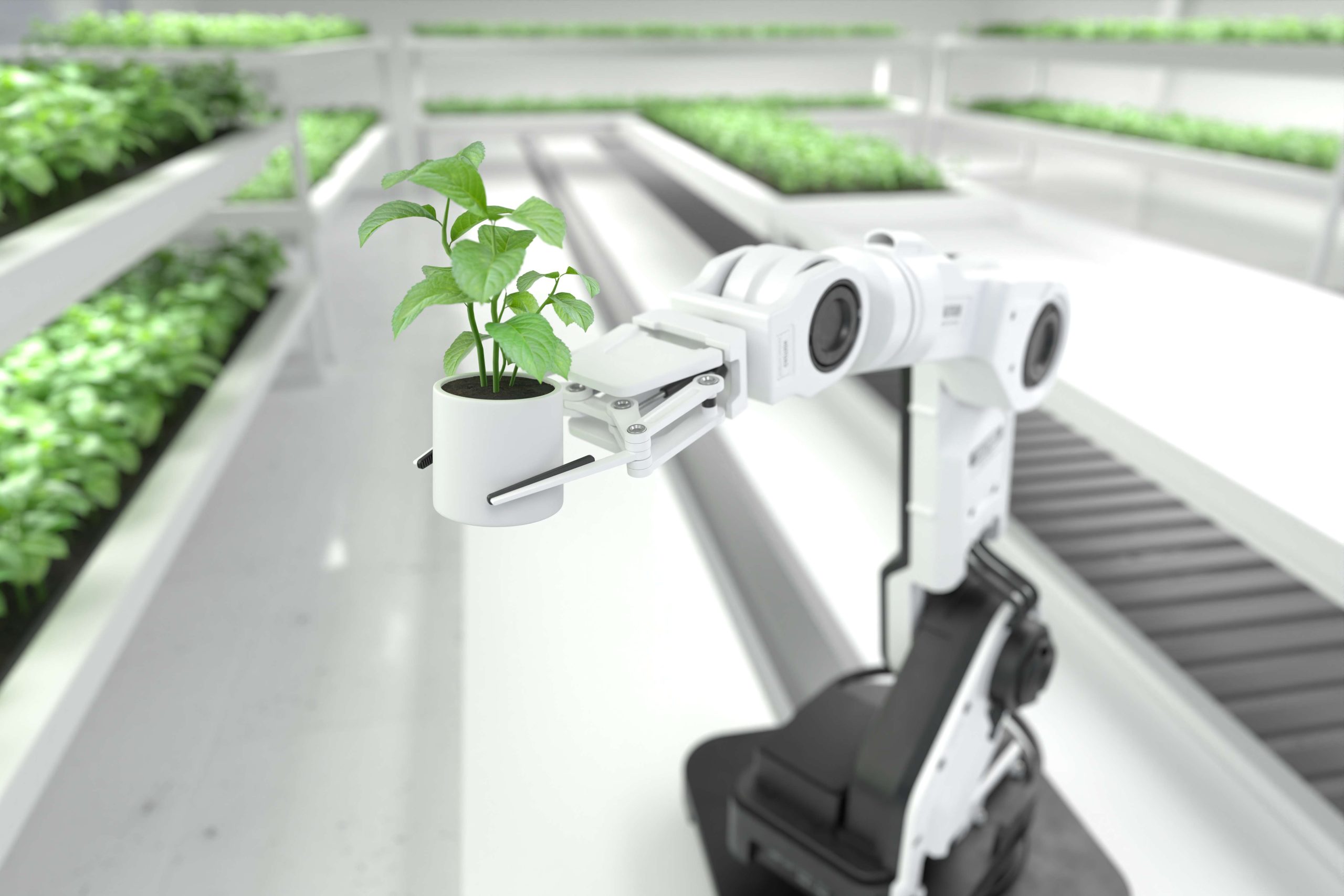What role will vertical farming play in the future of agriculture?
Chris Solt, Global Agriculture & Food Industry Leader
Whilst it can never fully replace traditional land-based methods, vertical farming definitely has a role to play in solving some of the food production challenges we face.
The 26th United Nations Conference of the Parties (COP26) summit has brought renewed attention to sustainability considerations and actions for agriculture. One solution that has garnered much attention is vertical farming, thanks to its ability to address supply chain issues, carbon footprint, water and drought challenges, and more.
In fact, the global market size for vertical farming will follow a CAGR of 24.3% from 2021 to 2026, reaching $19.86 billion by 2026. In this article, we'll discuss how vertical farming can complement traditional land-based farming to support the future of the agriculture sector and global food supply – and why it can never totally replace traditional land-based farming methods.
What Is Vertical Farming?
Vertical farming is the practice of growing crops indoors on vertical surfaces under artificially controlled light and temperature. It uses soil-less methods, such as hydroponics, aquaponics, and aeroponics, which create minimal waste. Farmers can achieve higher productivity in smaller spaces by stacking layers vertically and integrating them into environments that aren't suitable for traditional farming, such as tall buildings, warehouses, shipping containers, greenhouses, and more.
The highly controlled growing conditions mean that yields are predictable while the quality of the crops is more consistent. The ability to grow foods in urban environments not only increases food production. It also minimizes the carbon footprint associated with transporting produce over long distances.
How vertical farming can contribute to a more sustainable future for agriculture
It is important to say that vertical farming will never replace traditional land-based farming. Whilst it is suitable for some crops, it is not for others, including cereals, oilseeds, corn and maize crops, sugar beet, potatoes and other root vegetables.
These are all crucial elements in our food chain balance, so optimistic talk about vertical farming being ‘the future of farming’ are over-stated.
That said, there is certainly a role for vertical farming to exist alongside traditional land-base farming. What it can do is alleviate some of the challenges we experience in agriculture and food production today:
Water and soil management
Agriculture accounts for 69% of global water consumption, and vertical farming uses 95% less water than traditional methods. Vertical farming's small footprint also reduces the pressure on the planet's arable land by minimizing water run-off and allowing topsoil to replenish.
Sustainable farming
Vertical farming, practised in a closed environment, can solve some challenges associated with industrial agricultural practices by stacking crops, recycling nutrients, and controlling pests without harmful chemicals. As such, it won't cause issues associated with monocultures, nitrogen and phosphorus run-off, and pesticide use.
Food security
With the global population projected to cross the 9 billion mark by 2050, nations must increase food production by 70%. Operators can adjust the modular nature of vertical farms to fit different growing conditions while growing 75 times more food per square foot than a traditional farm.
Supply chain management
Vertical farms can play a critical role in supplying local and perishable speciality crops to urban centres, eliminating fuel-intensive long-distance trucking and food waste. They can also protect these population centres from supply chain disruptions, such as the ones we're experiencing today.
Carbon footprint
Two out of three people will be living in urban areas by 2050. Vertical farms can produce fresh vegetables close to these populations to meet food demands more sustainably by shortening distribution chains and lowering emissions in the process.
Predictable yield
Climate change and high temperatures reduce yields of desirable crops while causing the proliferation of weeds and pests. Vertical farms are protected from extreme weather conditions, changing climate patterns, and pests. Crops can grow in a wide range of latitudes with more predictable outcomes.
Healthier produce
Vertical farming is safer and healthier for the farmers, environment, and consumers since it doesn't require pesticides and fungicides. Vertical farming also eliminates soil erosion and nutrient loss. It can produce nutrient-dense crops without the extensive use of expensive fertilizers.
Considerations when investing in vertical farming
Vertical farming should be considered as one component of the solution to our global food supply because many crops aren't suitable for this farming practise. While it's good for salad greens, herbs, and some fruits, it can't produce many staple crops in sufficient quantities to replace land-based farming.
COVID-19 has highlighted various challenges in the agriculture sector, surfacing issues around food security, supply chain, market disruptions, and climate change. As a result, many nations have increased their commitments to solving the challenges.
The emergence of new technologies and their applications in vertical farming can help address many of these issues. We can also expect more government grants to become available for vertical farming and more consumers to vote with their wallets. However, there are also some considerations when evaluating such investment opportunities.
The cost of starting and running a vertical farming business depends on various factors. These include start-up costs, energy usage model, cost of electricity, access to customer or retailer, types of crop, and the size of the farm.
Vertical farming methods are more energy- and technology-intensive than traditional ones, so the upfront cost of setting up a vertical farm is often higher. Farm operators must have the knowledge and expertise to ensure optimal growth for each crop and dial in every piece of the supply chain to maximize the business's ROI.
An important part to play – but no Panacea
The investment community is excited about the potential of vertical and urban farming as a complement to traditional land-based farming to support a more sustainable approach to agriculture. The market has grown dramatically over the past few years and will continue to do so. We can expect these farms to keep increasing their yields and ROI to benefit consumers and investors alike thanks to ongoing investment and development in new technologies.
If we are realistic about what vertical farming can and cannot contribute to solving some of the challenges facing global food production, then we will use it in a way which plays to its strengths. Sadly in agriculture as in life there is no ‘magic bullet’; but that is not to say we shouldn’t embrace innovations which provide at least a partial solution to the issues we face.
Businesses and investors can shorten the learning curve and optimize their revenues with professional advisory services from experts in agriculture and emerging green tech to benefit from these opportunities. Learn more about our Agriculture, Food and Beverages advisory services and get in touch to see how we can help.



